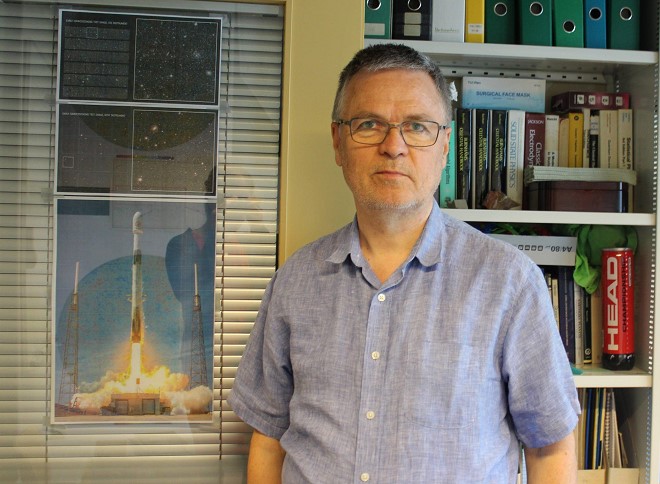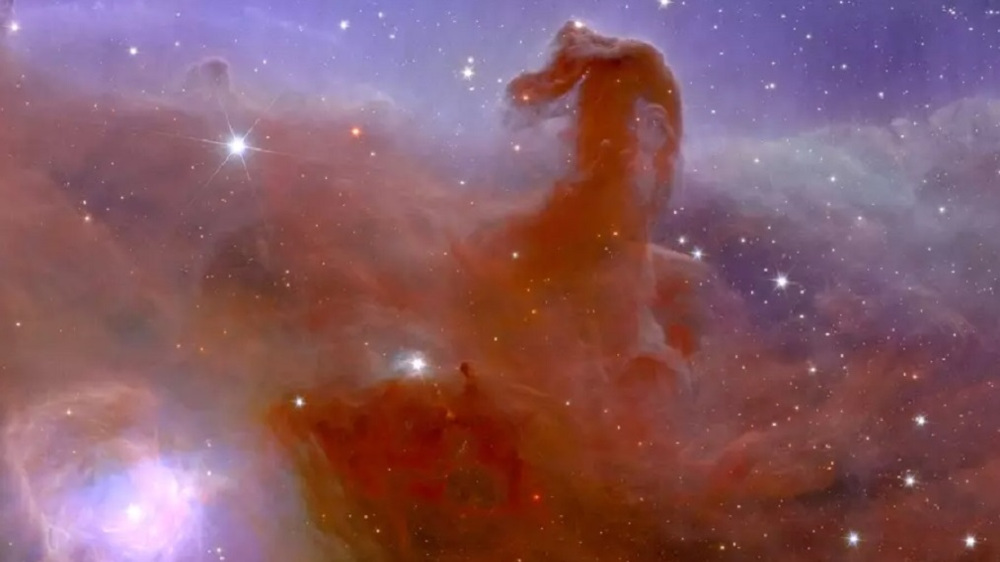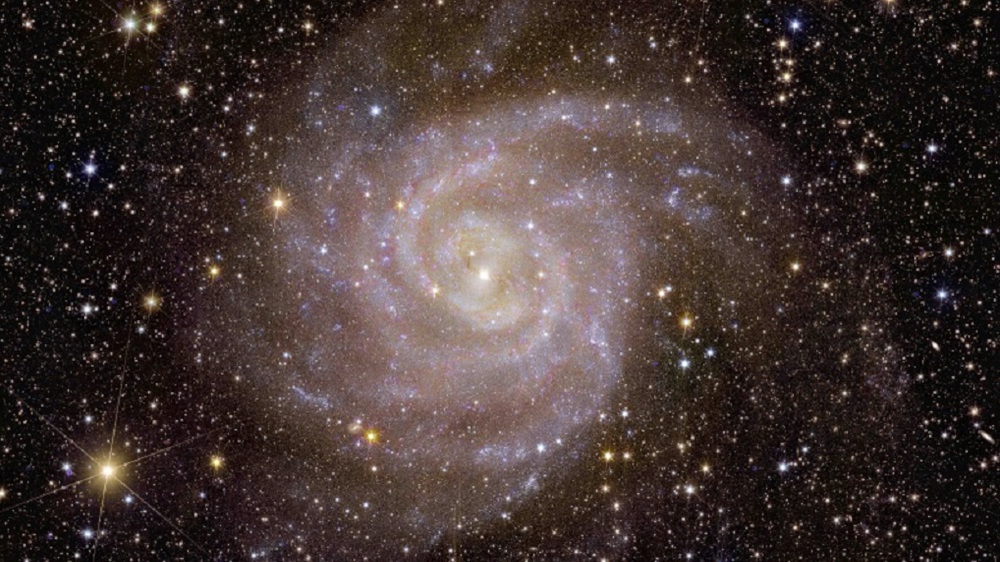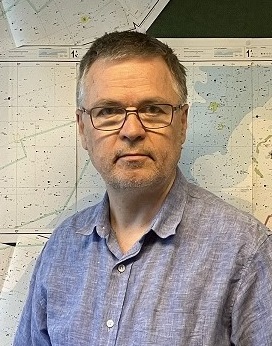
As a Cosmologist in the Euclid Consortium
Hannu Kurki-Suonio is a professor of cosmology at the University of Helsinki who leads Finland's participation in the European Space Agency's Euclid mission. Euclid is a wide-angle space telescope designed by the European Space Agency (ESA) and launched into space on 1.7.2023.
Could you summarise the objective of the Euclid mission?
Euclide's goal is to map out the large-scale structure of the universe and its history. It produces a three-dimensional map of the universe that shows how galaxies and dark matter are distributed. Looking back at the past at a distance reveals how the structure has evolved in the history of the universe.
What kind of scientific hypotheses are being tested?
A key cosmological question, for which the Euclid mission has been optimised, is the so-called problem of dark energy. It is known that the expansion of the universe began to accelerate about six billion years ago, but it is not known why. There are two hypotheses. The other is that we have a new source of unknown energy, known as dark energy. It fills the entire universe and acts repulsive. While gravity is generally attractive, the general theory of relativity allows certain energy forms to be repulsive, which would then accelerate their expansion. An alternative hypothesis is that the theory of gravity itself and the general theory of relativity must be corrected at large distances in such a way that gravity becomes repulsive at such large distances without the need for such a new energy component.
What is your hypothesis of where dark energy comes from; what is its origin? Will it also be examined within the framework of the Euclid mission?
Based on Euclide's observations, it is possible to determine the characteristics of dark energy, mainly the equation of state of dark energy. The pressure of dark energy depends on the energy density and provides some clues as to its more specific nature. We theorists have a large number of different hypotheses about its more detailed nature, and in the light of the observations it is possible to calculate which hypotheses are compatible with the observations.
What kind of measurements will Euclid take?
Euclid makes three kinds of observations. It takes photographs in visible light, photographs in various infrared bands, and also takes galaxy spectra. Photographs taken with visible light examine the shapes of the galaxies shown in them. In cosmology there are dark matter and dark energy that should not be confused with one another. Dark matter is a substance comprised of some unknown particles that has accumulated in substance concentrations in the structure of the universe, while dark energy is evenly distributed.
Although the dark matter itself is not visible, its gravity bends the course of light so that distant galaxies can be seen distorted because their light has passed nearby concentrations of the dark matter. Once we have determined the shapes of all galaxies, it will be possible to determine the average distortion in each direction. It can be used to calculate where the dark matter is and at what distances.
What kind of detection technology does Euclid use?
A telescope which is wider than one metre in diameter, but the telescope itself is not huge. Hubble and Webb use bigger telescopes. A special feature is that the telescope is wide-angle. Then you can see a hundred times larger part of the sky at a time. This applies specifically to our mapping of the entire sky, which is a much larger area than what Hubble and Webb have pictured. They can only picture some objects of interest to certain astronomers, but now the exact purpose is to map the entire universe.

The first color images of the universe taken by the Euclid telescope have been published. © ESA
How has Finland participated in the construction of observation instruments?
Finland has not participated in the construction of the observation equipment. We applied to Business Finland for funding for this, but no funding was received. Thus, we could not participate in building the instruments. Funding for the acquisition of computer hardware was received from the Academy of Finland, which means that this data analysis contribution is Finland's share.
What do you expect most from these measurements?
I am a cosmologist, which is why I am most interested in the basic question, that is, what is the outcome of the state equation of dark energy or whether the result is that observations cannot be explained with dark energy but rather the theory of gravity must be amended.
Which option is more likely?
I've studied some modifications of the general theory of relativity, but it's been a long time, so I don't have any favorite theory.
You mentioned the Euclid data centre operating in Finland. What kind of data will be processed there, how much data will be produced by Euclid and how much of it will be processed in Finland?
It has been provisionally agreed that five per cent of this will come to Finland. These centres are located in nine countries and the largest countries receive a larger share. Smaller countries receive five per cent.
Who is investigating it in Finland?
Five universities and IT Center for Science CSC have formed a consortium for this purpose. The equipment is at the CSC Center in Kajaani. Equipment was purchased already in 2018. So far, simulated data has been produced and processing with it has been practised. The equipment is conventional standard computing equipment. Wishes have also been expressed about graphic processors, but we have not had the means to take this into account. The British Data Centre has acquired them. The life expectancy of the equipment is about five years, and now we have a new purchase under way with the remaining money.
You represent Finland in the Euclid Consortium. What kind of experience is it to be involved?
The process has been long. At the end of 2009, the first contact was made to inquire whether Finland would be interested in joining. The contact did not come officially from a higher level, but from certain people I knew from the Planck project, which was the previous project in which we participated. It took two years to negotiate what Finland's contribution would be. In autumn 2011, Finland joined the Euclid Consortium in whose Board I represent Finland and I am in a way responsible for acquiring the financing for the Finnish share of this procurement.
I lead the research at the University of Helsinki and have applied for collaboration at other universities. The administrative burden has been rather heavy; has had to cooperate with a number of different parties (e.g. five universities), agree on tasks and responsibilities with ESA and the Euclid Consortium, obtain funding and take care of the equipment procurement. I have also led my own research team, from which the European Space Agency also requires constant reporting. I have less time to carry out research than before; it has been transferred more and more to the other members of my group.
Euclid is ESA's science mission, but can data also be used in some industrial sectors?
This is certainly as far away from some everyday applications as possible. Space technology development and leading the way in science always require the development of better detection technologies, so they may have applications elsewhere. Observations are of general interest; what the universe is like and how it has evolved. This may have profound significance, but it has no effect on practical life.
Have any attempts been made to simulate the dark matter?
There have been attempts to make dark matter in CERN's particle accelerator, but it has not been detected. As we do not know what kind of certain particles are, we do not know how to make them. In the tests, some particles collide with high energy, and we try to see if dark matter particles are also generated; they have not been detected.

Euclid’s view of spiral galaxy IC 342. © ESA
How does the Euclid mission affect the Finnish research field?
There are major science projects in Europe, and this is a major international project involving 17 countries. Theoretical research in cosmology has been strong in Finland; it has been at the forefront. The mission supports research carried out in Finland well. The University of Helsinki has had a strong and internationally respected group of cosmology for a long time. An international evaluation of the Department of Physics was conducted when Finland had not yet acceded to Euclid. We received minus points for not participating in Euclid, which as a key project would be well suited to the profile of the University of Helsinki. It was a little bit funny that the application process was already in progress.
Are there any planned research projects that utilise the data produced by Euclid?
The Euclid consortium has a very large number of different projects involving we are participating. The main work input is the key responsibilities in data analysis. The final analysis, in which data is applied to different cosmological theories, we are participating in projects related to the nature of primordial density variations. At first, there have been small fluctuations in density and over time they have grown into clusters of galaxies. It is now thought that the original fluctuations in density have probably been created as quantum fluctuations and are related to a theory called cosmological inflation. There are also a number of different models for inflation that produce different original fluctuations in density.
We are involved in a project that defines the properties of original density variations from Euclid's data, such as isocurvature models. Isocurvature models refer to pressure and energy forms where, for example, variations in the density of a substance differ in different matter and energy forms, such as dark matter, ordinary matter and radiation. The development of the universe from the first second onwards is well known, but the events of the first second are not. There are many different theories about what could have happened that can be tested with these observations.
Euclid has been called one of mankind's greatest science missions, do you sign this vision? How do you estimate the scientific significance of Euclid itself?
It's the biggest thing in cosmology right now. Maybe it's hard to set the order. Before Euclid, there was Planck, which Euclid supplements; Euclid is complementary in nature. Planck's focus was on the earlier universe, Euclid's focus is on later development. The Americans are about to launch a similar mission called Roman.
What kind of science would you do yourself?
A decision has been made to implement a Lisa mission that detects gravitational waves. Planck would need a successor. It measured variations in brightness of background cosmic microwave radiation, but also variations in polarisation of background cosmic radiation should be accurately measured. Such polarisation of background radiation has often been proposed to ESA, but it has never won the competition because it has been considered that now is the turn of other questions. Apparently, at the end of the decade, the Japanese are launching a satellite called LiteBIRD, which is more modest than the proposals made to ESA.
Is Euclid's data shared globally?
It has been agreed with ESA that the Euclid consortium has an exclusive right to data for 14 months. If data have been collected for one year, the consortium has 14 months to use it and publish its own studies. It will then be published for the entire scientific community and the whole world.
Is Euclid personally relevant for you?
Yes, it has dominated my work. Since 2015, my effort has been more in Euclid than in Planck. Planck ended completely in 2020. The results are expected with great enthusiasm. I will retire in one year and the responsibilities will be transferred to younger people. It is kind of a relief to be able to keep track of scientific progress, but all administrative responsibilities are transferred to others.
Are you also going to work as a researcher after retirement?
Yes, that would be the idea, but it remains to be seen. The University of Helsinki and ESA are contracting parties to Finland's contributions and appoint a representative of Finland to the Euclid Consortium Board.
What are the final targets for the last year?
The acute task is to procure equipment. The aim is that when I retire, the new equipment will run in the data centre.





